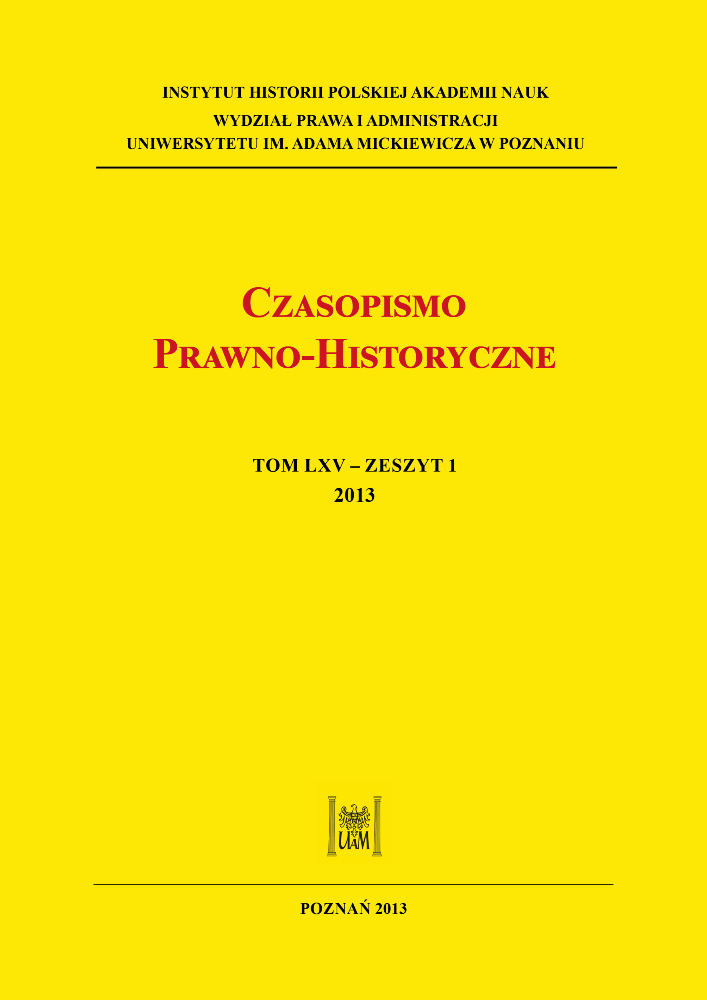Abstract
This paper describes the sand procedure of the Hetman’s Court in the Crown Army at the time of the Great Turkish War (1683-1699). The Court has not been the subject of a separate study since the 1920s, whereas older studies relied on a very meagre source base. Meanwhile, there were availble Hetman’s registers (copies of documents issued by Hetman’s chancellery) from the period when the offi ce was held by Stanisław Jan Jabłonowski, the Ruthenian Palatine and later Kraków Castellan. The registers, albeit incomplete (registers for 1683-1685, 1687-1689 and 1696 are missing), contain, inter alia, decrees issued by the Court Martial (i.e., the Hetman’s Court), which served as the basis for this discussion. The Great Crown Hetman, similarly to the connétable de France (until 1627), combined in his hand the authority of the Commander-in-Chief of the regular army and the administrative authority over it. One of the major aspects of the latter was administration of justice over soldiers. Originally, the hetman had exclusive jurisdiction in this respect but the demands of nobility who suffered from robberies by soldiers resulted in subjecting soldiers to the jurisdiction of ‘civil’ (i.e. non military) courts. In the late 17th century, one can speak of the practically overlapping jurisdiction of the Hetman’s Court, Crown Tribunal and fi scal organs with relation to so-called causae iniuriatorum (causes of the aggrieved: nobility vs. the army). The Great Crown Hetman did not have as extensive a judicial apparatus as some western European armies at that time. Most causes were adjudicated by Jabłonowski himself (possibly with the assistance of junior judges). The Court Martial had also its own instigator and ushers. The competences of military judges are not very clear. To perform certain evidentiary acts (such as inquisition – an equivalent of scrutinum conducted in district courts (sądy ziemskie) – a kind of on-site inspection combined with the hearing of witness testimony) the Hetman would delegate trusted offi cers or national enlistment comrades and, not infrequently, local ‘civil’ offi cers. The role of military police was doubtless performed by the Hetman’s company of Hungarian infantry. The procedure of the Hetman’s court was similar to that of a trial before a district court. A military trial was in principle instituted by a complaint, it was adversarial and controlled by the parties. Proceedings were instituted by bringing a complaint to the military instigator who, in turn, petitioned the Hetman to issue a writ of summons. The penalty for a failure to appear on the fi rst date was contumacy (a fi ne – so-called niestanne). A writ of summons for the second date was announced publicly. The second term was a strict one – a failure to appear meant losing the case, having one’s pay distrained (this, by the way, was the most effective remedy) and – theoretically – being dishonourably discharged from the army (wytrąbienie). The most common evidence included inquisition, interrogation (involving torture in the case of people of non-noble descent) and an oath. The most important penalties imposed by the Court Martial included the penalty of the throat (death penalty – imposed very rarely, it practically was not executed in the case of noblemen), imprisonment in a tower and fi nally damages, which had the greatest practical value.
License
Copyright
© by Faculty of Law and Administration, Adam Mickiewicz University, Poznań, 2013
OPEN ACCESS




